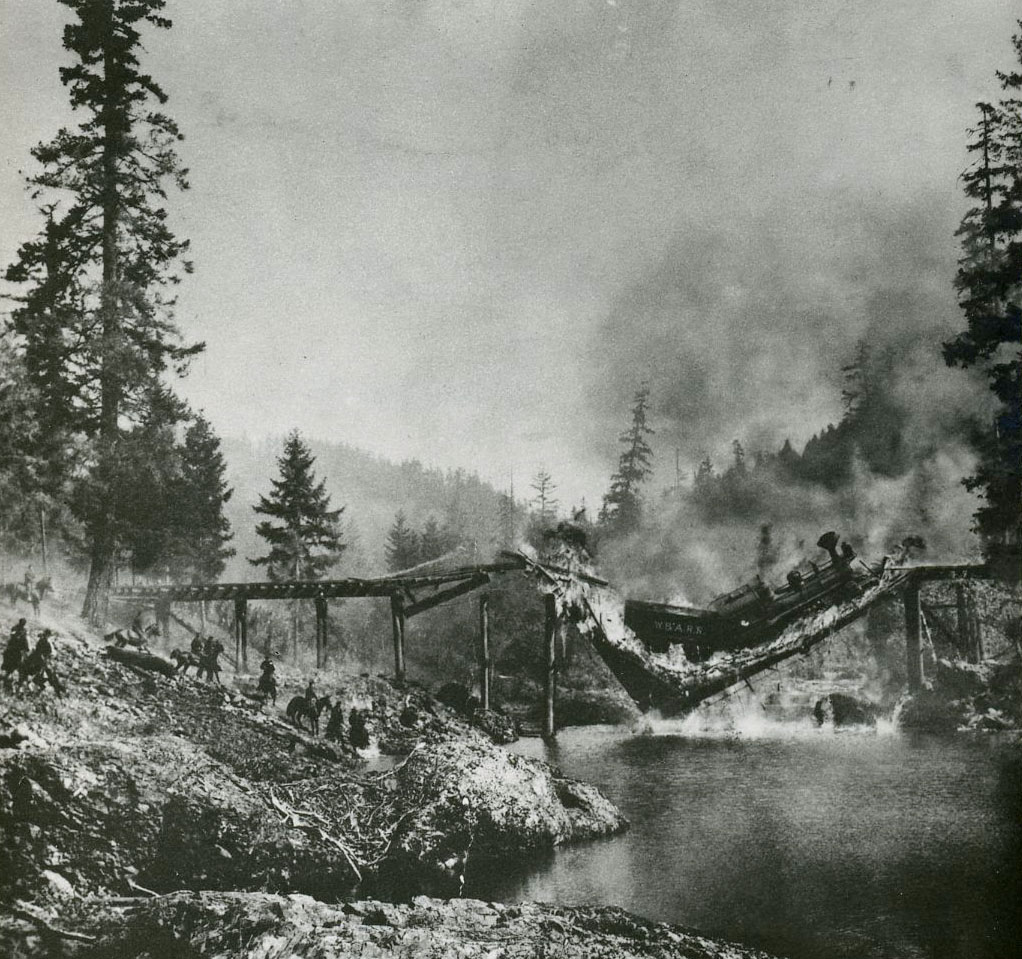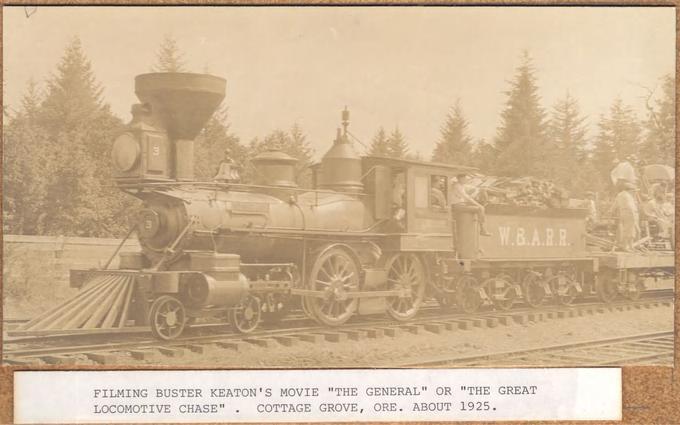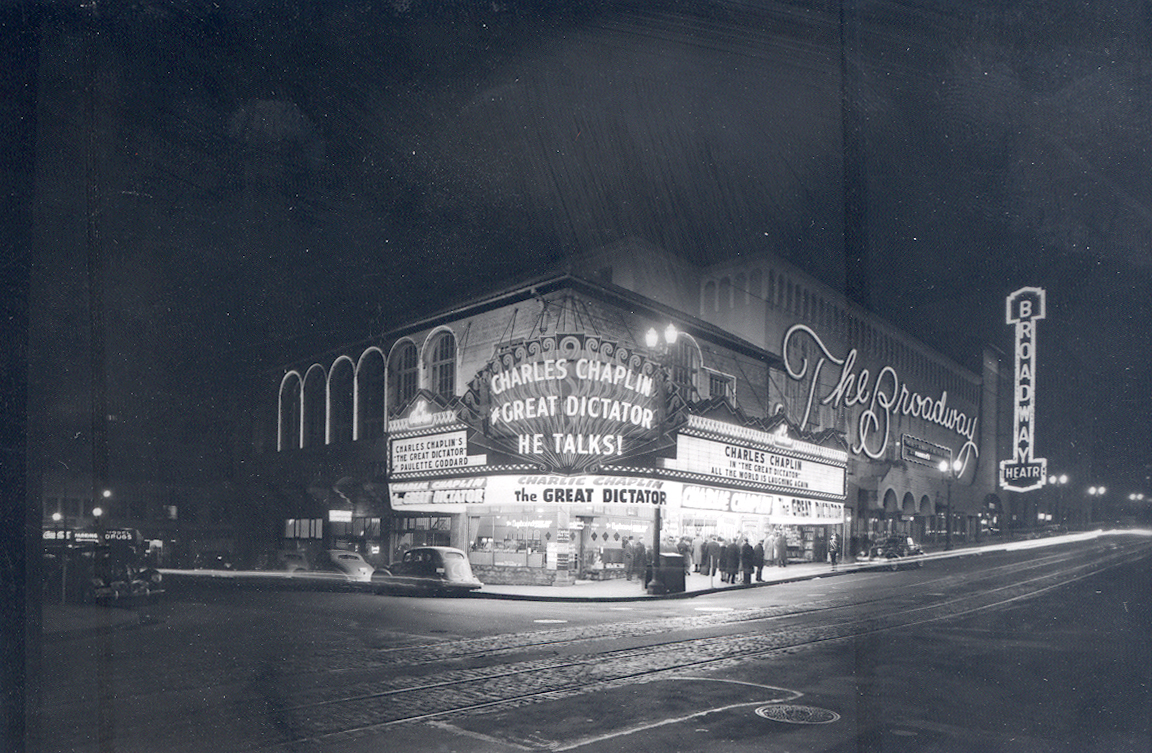Buster Keaton's masterpiece and one of the greatest silent movies of all time was filmed in the Cottage Grove area in the summer of 1926. The General is a Civil War tale, the fictionalized account of an attempted hijacking of a Confederate train called the General by Union spies in 1862. Buster Keaton, who produced and directed the film, plays Johnnie Gray, the engineer of the General, whose sweetheart Annabelle Lee, played by Marion Mack, rejects him when he fails to enlist in the Confederate Army. When Union spies make off with both the General and Annabelle Lee, Johnnie Gray must attempt a heroic rescue of the train and his girl.
Keaton attempted to shoot the film where the incident actually happened in northern Georgia and Tennessee, using the actual steam locomotive, the General, then on display at the railroad station in Chattanooga. But when the locomotive's owners realized the film would be a comedy and some of the locals protested, the deal fell apart. Keaton's location manager then discovered a similar locomotive in the logging camps to the east of Cottage Grove, a town of about two thousand inhabitants, along with suitable tracks to film the action and scenery resembling the southern Appalachians.
A total of three steam locomotives were procured for the movie. They were sent to the Dallas Machine and Locomotive Works in Dallas, Oregon, for alterations to have them better resemble Civil War-era engines. Before the engines departed Dallas for Cottage Grove, the first filming took place—a scene involving two of the locomotives—at Black Rock Creek near Falls City.
On May 27, 1926, eighteen freight cars full of equipment, props, and costumes arrived in Cottage Grove, where an elaborate set representing Marietta, Georgia, in 1862 was built at the east end of town. Keaton's film company, numbering about sixty people, took over the Bartell Hotel. Filming began on June 8 and continued until August 6, when forest fires in the area created smoky conditions that forced the company to return to Hollywood, where several scenes were filmed. On August 26, a smaller group returned to complete the filming, which ended on September 20.
Much of The General was shot east of Cottage Grove on the rail lines belonging to the Oregon, Pacific and Eastern Railroad. Chase scenes, sometimes involving three trains, were filmed by a camera mounted on a flatcar running on parallel tracks. The climactic scene in the movie required the construction of a 215-foot trestle bridge across the Row River, near the tiny community of Culp Creek. In the film, Johnny Gray sets the bridge on fire after he crosses it in the General, and the pursuing train, the Texas, crashes into the Row River in a spectacular fiery collapse. The scene cost an estimated $42,000 to shoot and is said to be the most expensive scene in silent film history.
The General had its Oregon premier at the Majestic Theater in Portland on December 31, 1926, and its Cottage Grove premier a month later. Reviews were generally unenthusiastic; and the film, which had cost about $750,000 to make, took in less than $500,000 at the box office. Three decades later, however, cinephiles rediscovered The General, and it is now considered to be one of the greatest American movies ever made.
Keaton considered The General his finest achievement. "I was more proud of that picture than any picture I ever made," he told an interviewer in 1963. The film ranked eighteenth on the American Film Institute’s list of "100 Greatest American Films of All Time," released in 2007. Cottage Grove commemorates the summer of 1926 with a large mural of the General on Main Street and the celebration of Buster Keaton Days.
-
![]()
Train wreck in "The General," 1926.
Courtesy Oreg. Hist. Soc. Research Library, 024191
-
![]()
Filming "The General" in Cottage Grove in about 1925.
Courtesy Oregon State University Libraries, WCPA 208H-2
-
![]()
Buster Keaton was made a captain in the Oregon National Guard, 1927. Guardsmen were used as extras in "The General.".
Courtesy OR Hist. Soc. Research Library, 011083
Related Entries
-
![Animal House (film)]()
Animal House (film)
National Lampoon’s Animal House, one of the most successful American fi…
-
![Oregon and the Film Industry]()
Oregon and the Film Industry
Early Filmmaking in Oregon Motion pictures debuted in Oregon in 1894 w…
-
![The Way West (film)]()
The Way West (film)
The Way West, a big-budget western film that was universally panned by …
Map This on the Oregon History WayFinder
The Oregon History Wayfinder is an interactive map that identifies significant places, people, and events in Oregon history.
Further Reading
Meade, Marion. Buster Keaton: Cut to the Chase. New York, NY: Da Capo, 1997.
Cottage Grove Historical Society, ed. The Day Buster Smiled. Cottage Grove, Ore.: Eugene Print, Inc., 1998.
American Film Institute. "AFI'S 100 Years...100 Movies — 10th Anniverary Edition." American Film Institute. 18 June 1915. Web. 18 June 1915.
Anobile, Richard J., ed. Buster Keaton's The General. New York, NY: Universe Books, 1975. Print.
Bengston, John. Silent Echoes: Discovering Early Hollywood Through the Films of Buster Keaton. Santa Monica, CA: Santa Monica Press, 2000..
Keaton, Buster, and Charles Samuels. My Wonderful World of Slapstick. Kindle Edition. Pickle Partners Publishing, 2015. Ebook.






